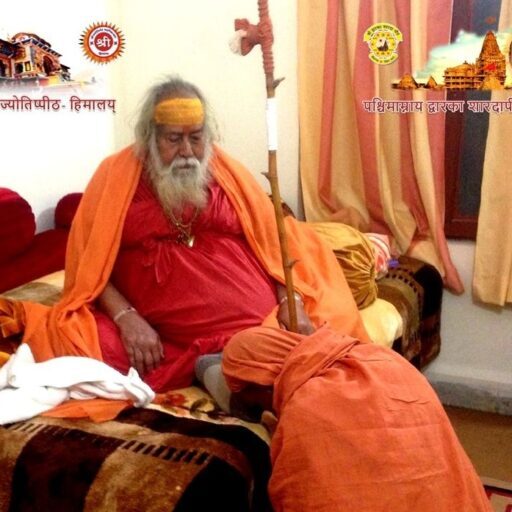What is Spirituality and Spiritual Life According to the Vedas, Vedanta, Advaita Siddhanta, and Adi Shankaracharya
Introduction
Spirituality, according to the Vedas and Advaita Vedanta, is not merely a religious practice but the very quest for truth — the realization of the Self (Atman) and its unity with the Absolute (Brahman). Adi Shankaracharya, the great exponent of Advaita Vedanta, emphasized that spirituality is the process of discriminating between the real and the unreal, leading to the realization of one’s true nature as Sat-Chit-Ananda (Existence-Consciousness-Bliss).
Vedic Foundation of Spiritual Life
The Vedas are the foundational texts of Sanatana Dharma and begin the journey of spirituality with śravaṇa (listening), manana (reflection), and nididhyāsana (deep meditation). The following mantra from the Bṛhadāraṇyaka Upaniṣad (1.3.28) encapsulates the spiritual yearning:
“asato mā sad gamaya, tamaso mā jyotir gamaya, mṛtyor mā amṛtaṃ gamaya”
“Lead me from the unreal to the Real, from darkness to Light, from death to Immortality.”
Here, the seeker implores for the guidance to transcend the impermanent and reach the eternal Self.
Vedanta and Advaita Siddhanta: The Non-dual Path
According to Advaita Vedanta, there is only one absolute reality — Brahman. Everything else is Māyā, an appearance or illusion.
Adi Shankaracharya’s seminal work, Vivekachudamani, elaborates:
“Brahma satyam jagan mithyā, jīvo brahmaiva nāparaḥ”
“Brahman alone is real, the world is illusory; the individual self is none other than Brahman.”
Spiritual life, then, becomes the direct pursuit of this truth. The illusion of separateness dissolves through Self-inquiry (ātma-vichāra), detachment (vairāgya), and knowledge (jñāna).
The Fourfold Aims of Human Life – Chaturvidha Purushartha
The Vedic tradition outlines four main aims (puruṣārthas) of life:
Dharma – Righteous living, ethical conduct.
Artha – Material prosperity and security.
Kāma – Fulfillment of desires in a righteous way.
Mokṣa – Liberation from the cycle of birth and death (saṃsāra).
Among these, Mokṣa is considered the ultimate aim in Vedanta. Dharma, Artha, and Kāma are means; Mokṣa is the end.
Developing Vairagya – Dispassion for Liberation
A sincere spiritual seeker (mumukṣu) must cultivate Vairāgya, or dispassion. This is the disinterest in transient pleasures and the longing for the eternal.
From Vivekachudamani:
“Vairāgyaṃ ca viṣaya-vitr̥ṣṇā, dṛṣṭānuśravika-viṣaya-viṭṛṣṇasya”
“Vairagya is the state of mind where one has no desire for enjoyments in this or the other worlds.”
This dispassion is not escapism but a conscious choice of the eternal over the ephemeral. It arises naturally through study (śravaṇa), reflection (manana), and association with wise beings.
The Role of the Guru and the Guruparamparā
The Vedas emphasize that Self-knowledge cannot be obtained without a Guru. The Guruparamparā (lineage of teachers) is the living tradition that transmits this knowledge.
As the Muṇḍaka Upaniṣad (1.2.12) says:
“tad-vijñānārthaṁ sa gurum evābhigacchet…”
“To realize that Truth, let the seeker go to a teacher who is well-versed in the scriptures and established in Brahman.”
Approaching the Guru with humility (śraddhā), service (seva), and surrender (śaraṇāgati) is essential. The Guru dispels ignorance just as the sun removes darkness.
The Power of Bhakti in Attaining Moksha
Though Advaita emphasizes Jñāna (knowledge), Bhakti (devotion) is not opposed to it. In fact, Shankaracharya himself composed many hymns, like the Bhaja Govindam, extolling the power of devotion:
“bhaja govindaṁ bhaja govindaṁ, govindaṁ bhaja mūḍhamate”
“Worship Govinda, worship Govinda, worship Govinda, O fool! When the hour of death approaches, grammar will not save you.”
This shows that devotion melts the ego, opens the heart, and leads the seeker to surrender. When Bhakti matures, it becomes Para Bhakti — which is one with Jnana.
Final Liberation – Moksha Through Surrender and Knowledge
The journey ends when the seeker, having cultivated Viveka (discrimination), Vairagya, Shatsampatti (six virtues), and Mumukshutva (intense longing for liberation), surrenders the ego to the Guru and through Self-inquiry realizes:
“Aham Brahmāsmi” – “I am Brahman.” (Bṛhadāraṇyaka Upaniṣad 1.4.10)
Here, moksha is not reaching a place but realizing your own nature as eternal, formless, and free. Nothing is to be added, only ignorance is to be removed.
Conclusion
Spirituality in Vedanta is a deep, inward journey toward the Self, guided by the Vedas, purified by Vairagya, illuminated by the Guru, and fulfilled in Jnana and Bhakti. As Adi Shankaracharya declares:
“nāhaṁ manushyo na cha deva-yakṣaḥ, na brāhmaṇaḥ kṣhatriya vaiśya śūdraḥ…”
“I am not a man, nor a god or spirit… I am pure consciousness – Śivoham, Śivoham.”
Let every seeker walk this timeless path — with purity, devotion, and surrender — and realize the bliss of Self-knowledge and freedom.
